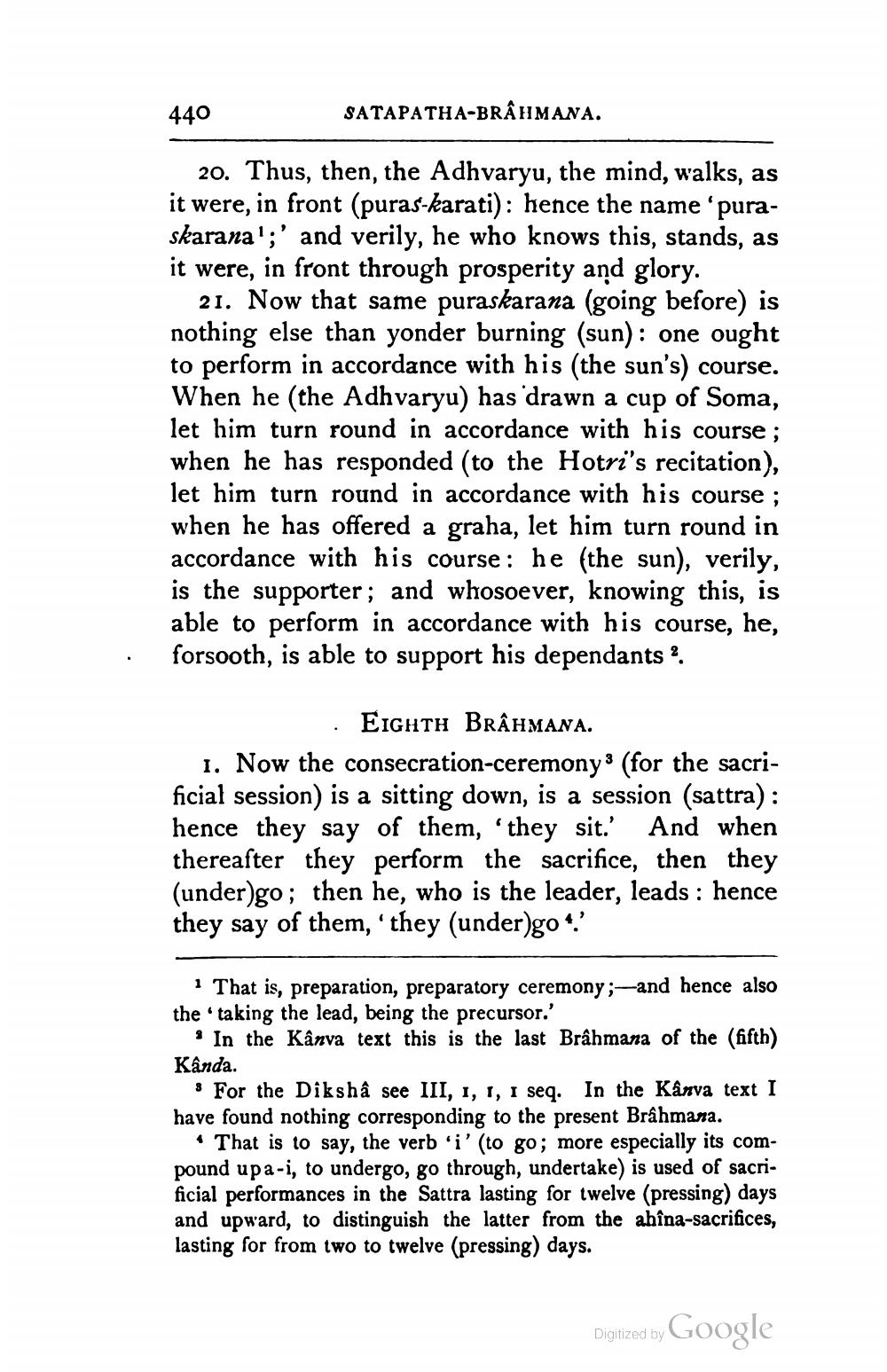________________
SATAPATHA-BRAHMANA.
20. Thus, then, the Adhvaryu, the mind, walks, as it were, in front (puras-karati): hence the name 'puraskarana';' and verily, he who knows this, stands, as it were, in front through prosperity and glory.
21. Now that same puraskarana (going before) is nothing else than yonder burning (sun): one ought to perform in accordance with his (the sun's) course. When he (the Adhvaryu) has drawn a cup of Soma, let him turn round in accordance with his course; when he has responded (to the Hotri's recitation), let him turn round in accordance with his course; when he has offered a graha, let him turn round in accordance with his course: he (the sun), verily, is the supporter; and whosoever, knowing this, is able to perform in accordance with his course, he, forsooth, is able to support his dependants 2.
440
EIGHTH BRAHMANA.
1. Now the consecration-ceremony3 (for the sacrificial session) is a sitting down, is a session (sattra): hence they say of them, 'they sit.' And when thereafter they perform the sacrifice, then they (under)go; then he, who is the leader, leads: hence they say of them, 'they (under)go*.'
1 That is, preparation, preparatory ceremony;-and hence also the taking the lead, being the precursor.'
In the Kânva text this is the last Brâhmana of the (fifth) Kânda.
For the Dikshâ see III, 1, 1, 1 seq. In the Kâzva text I have found nothing corresponding to the present Brahmana.
That is to say, the verb 'i' (to go; more especially its compound upa-i, to undergo, go through, undertake) is used of sacrificial performances in the Sattra lasting for twelve (pressing) days and upward, to distinguish the latter from the ahîna-sacrifices, lasting for from two to twelve (pressing) days.
Digitized by
Google




